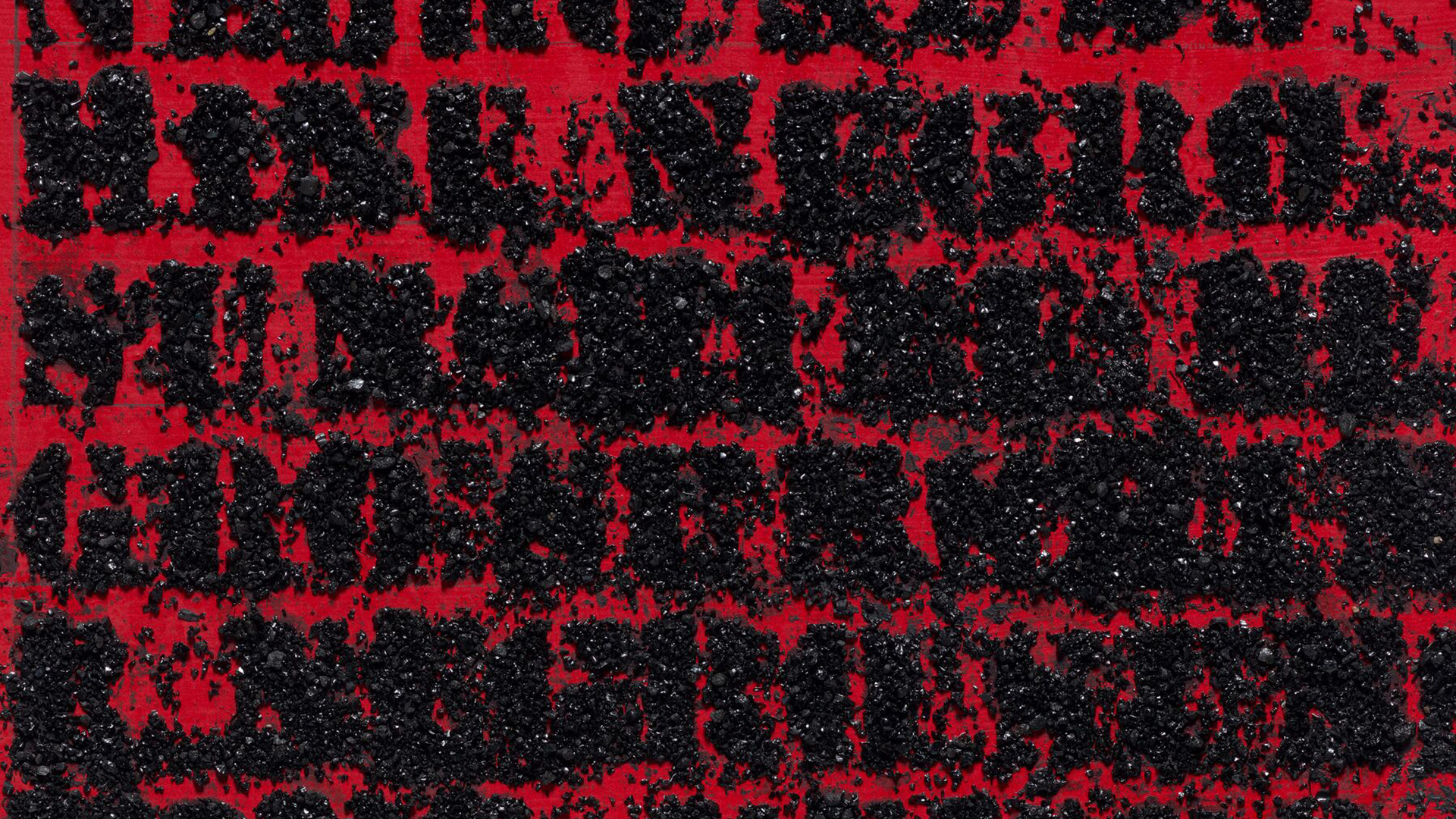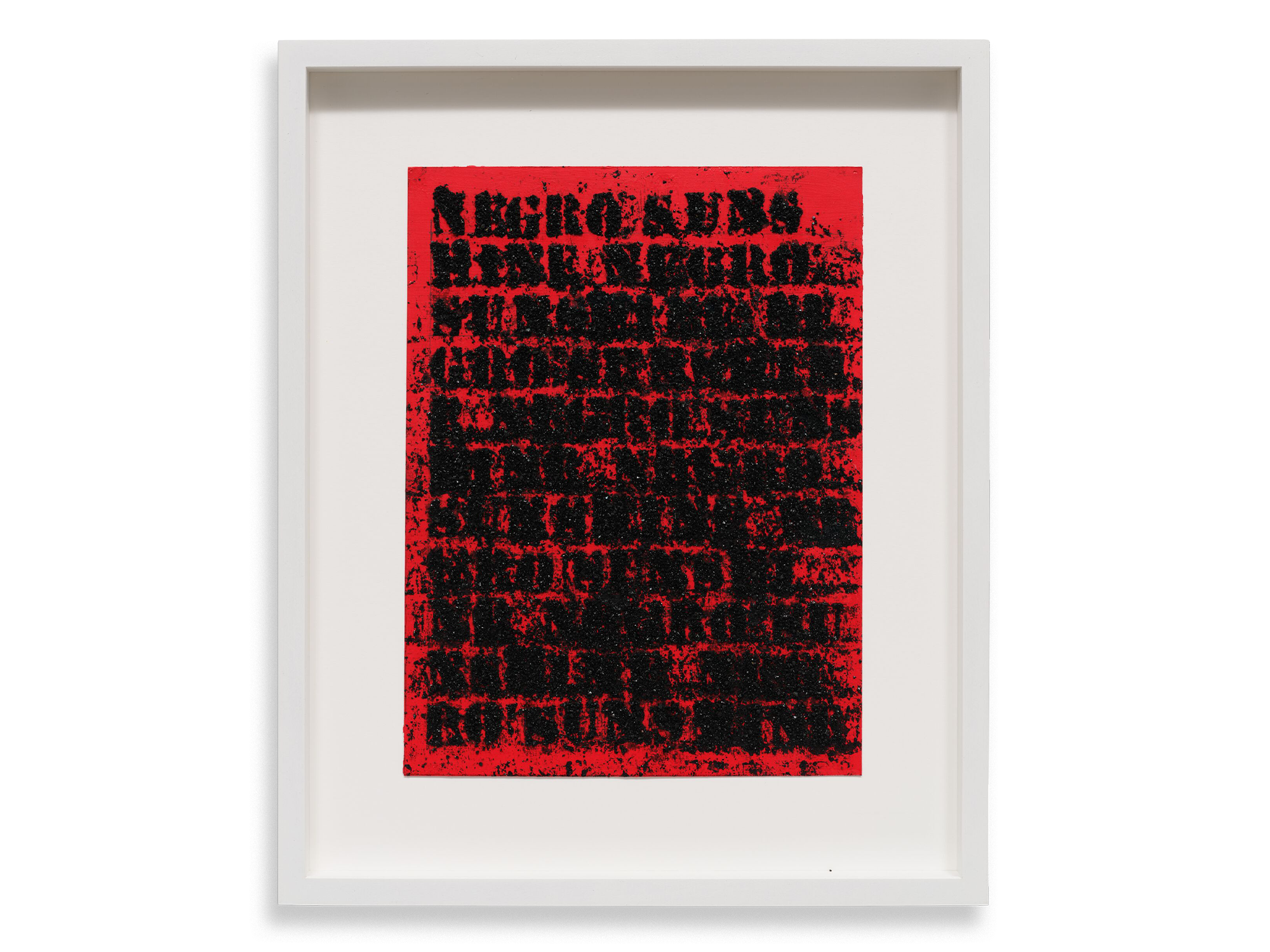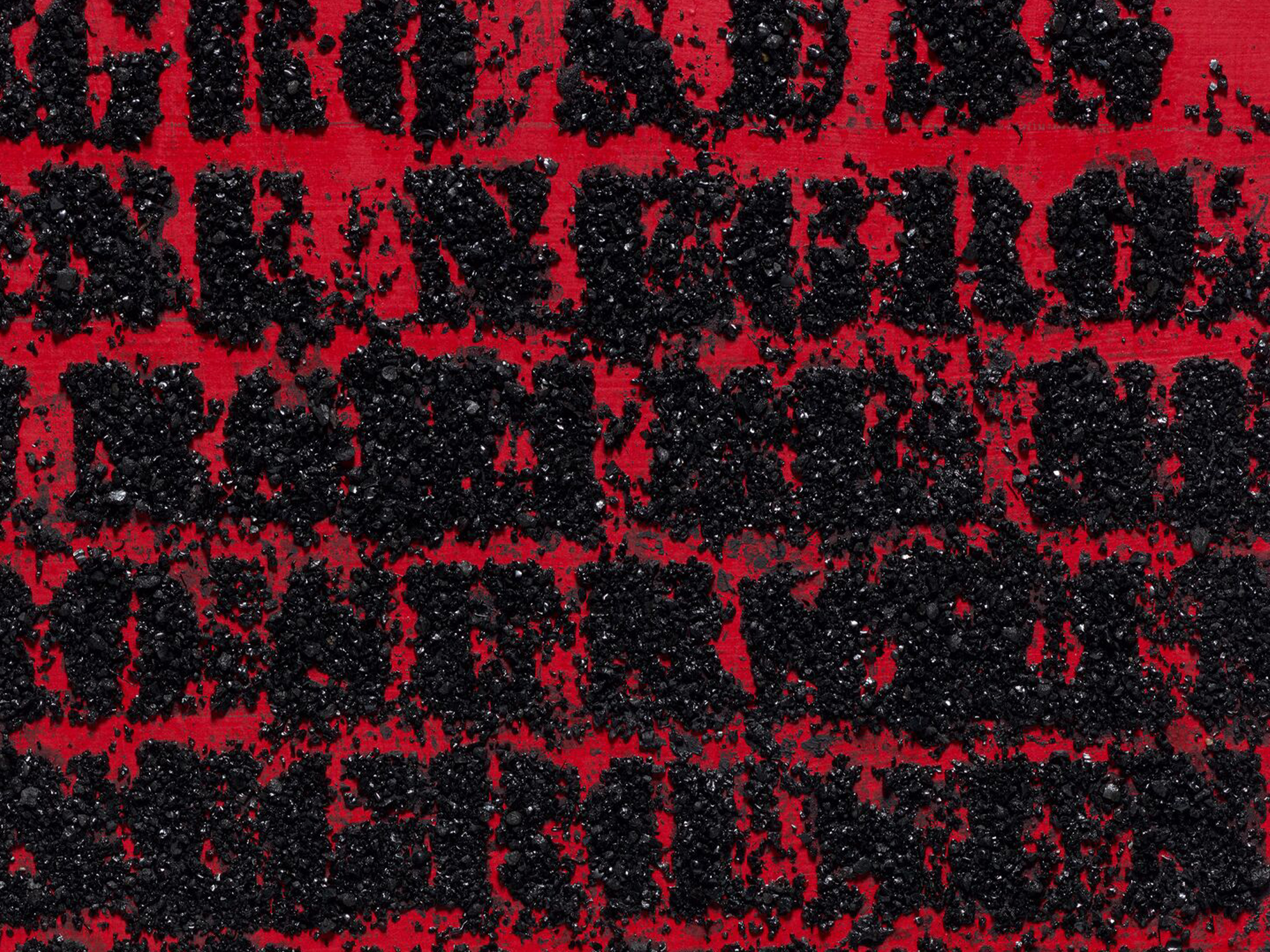Glenn Ligon
Study for Negro Sunshine (Red) #63
Study for Negro Sunshine (Red) #63
Viewing location: New York
2022
Oil stick, coal dust and acrylic on paper
30.5 x 22.9 cm / 12 x 9 in
42.5 x 34.9 x 3.8 cm / 16 3/4 x 13 3/4 x 1 1/2 in (framed)
Signed, titled, dated on verso

Glenn Ligon’s ‘Study for Negro Sunshine (Red) #63’ (2022) is a striking example of the artist’s celebrated body of text-based works in which he stencils text onto paper or canvas with oil stick. Quoting from Gertrude Stein’s 1909 novella ‘Three Lives,’ Ligon repeatedly stencils the phrase ‘negro sunshine’ onto the red ground. As he moves across the paper, oil stick residue and smudges from the stencil accumulate to partially abstract some of the letters. Coal dust is added, obscuring the text further, but also giving it density, weight, and a sparkling texture. Through the work’s varying degrees of legibility, the viewer is prompted to consider both invisibility and hypervisibility as it relates to the Black experience.
‘Study for Negro Sunshine (Red) #63’ also pays homage to Andy Warhol’s ‘Death and Disaster’ series (1963) in its use of a bold red ground. Ligon states: ‘I remember visiting a red [car crash painting] at MoMA when I was in my 20s. I was deeply influenced by it: interested in the repetition, interested in the subject matter. […] I’ve been trying to figure out a way to grapple with that, and one of the ways to do so is to nod to it with this red colour.’ [1]


Just as Stein famously used repetition to alter, emphasize and expand the meaning of her words, Ligon abstracts her phrase to recontextualize it and imbue it with new meaning. He explains: ‘It’s not unconnected with the stereotypical depictions of Black people, but, taken out of that context, it has a totally different kind of connotation and meaning and resonance. Black joy exists, now and historically, despite the history of this country.’ [2]

About the artist
 Born in the Bronx, New York, in 1960, Glenn Ligon received a BA from Wesleyan University in 1982. His early practice was grounded in painting, and his canvases of this period built upon the legacies of such Abstract Expressionist artists as Philip Guston, Cy Twombly, Robert Rauschenberg, and Jasper Johns. In 1984 – 1985, Ligon spent an academic year in the Whitney Museum of American Art’s Independent Study Program, developing a series of representational drawings of iconic sculptures by European artists such as Alberto Giacometti and Constantin Brâncuși, juxtaposed against images of African American hair products rendered in acrylic and ink.
Born in the Bronx, New York, in 1960, Glenn Ligon received a BA from Wesleyan University in 1982. His early practice was grounded in painting, and his canvases of this period built upon the legacies of such Abstract Expressionist artists as Philip Guston, Cy Twombly, Robert Rauschenberg, and Jasper Johns. In 1984 – 1985, Ligon spent an academic year in the Whitney Museum of American Art’s Independent Study Program, developing a series of representational drawings of iconic sculptures by European artists such as Alberto Giacometti and Constantin Brâncuși, juxtaposed against images of African American hair products rendered in acrylic and ink.
[1] Glenn Ligon quoted in ‘Conversation: Glenn Ligon and Hamza Walker,’ in ‘Glenn Ligon. Untitled (America)/Debris Field/Synecdoche/Notes for a Poem on the Third World,’ Los Angeles CA: Regen Projects, 2019, p. 75.
[2] Glenn Ligon quoted in Glenstone Museum, ‘Glenn Ligon on “Warm Broad Glow II,” 2011,’ 28 September 2021, https://youtu.be/iZuw7b6R9ss (accessed 24 August 2022).
Glenn Ligon © Glenn Ligon. Photo: Paul Mpagi Sepuya
All artwork images © Glenn Ligon




